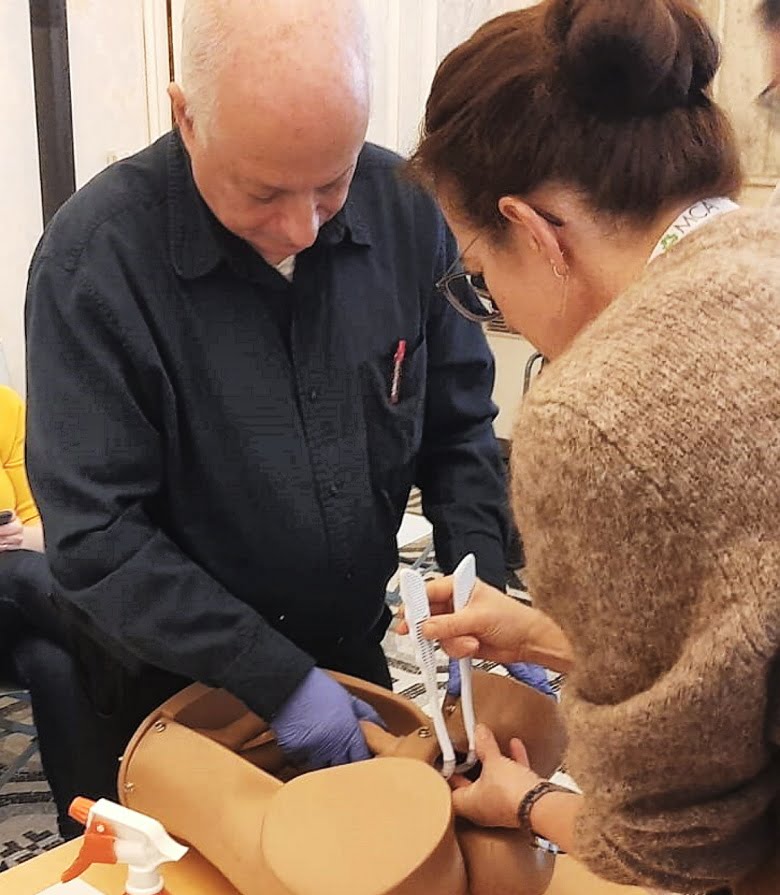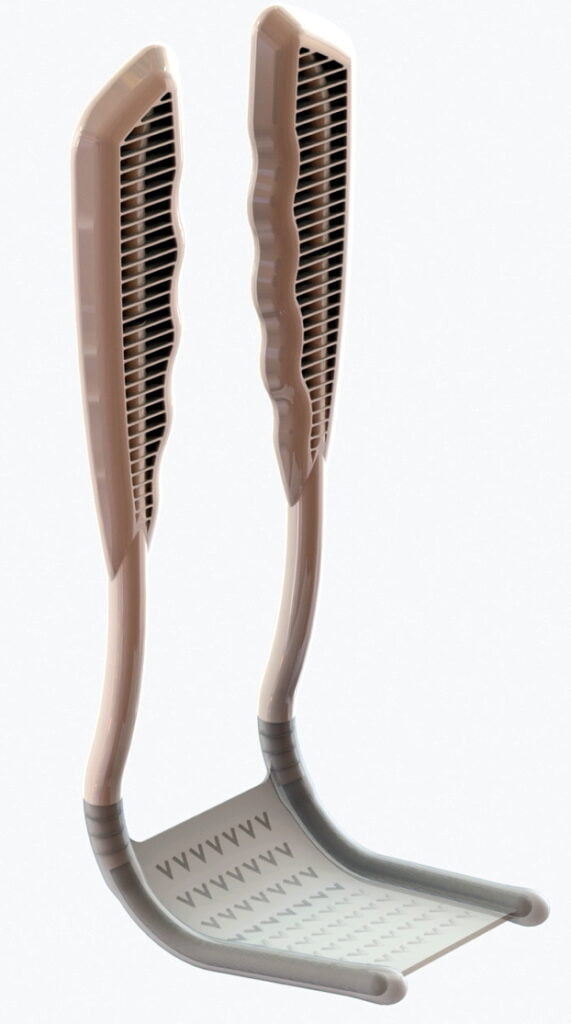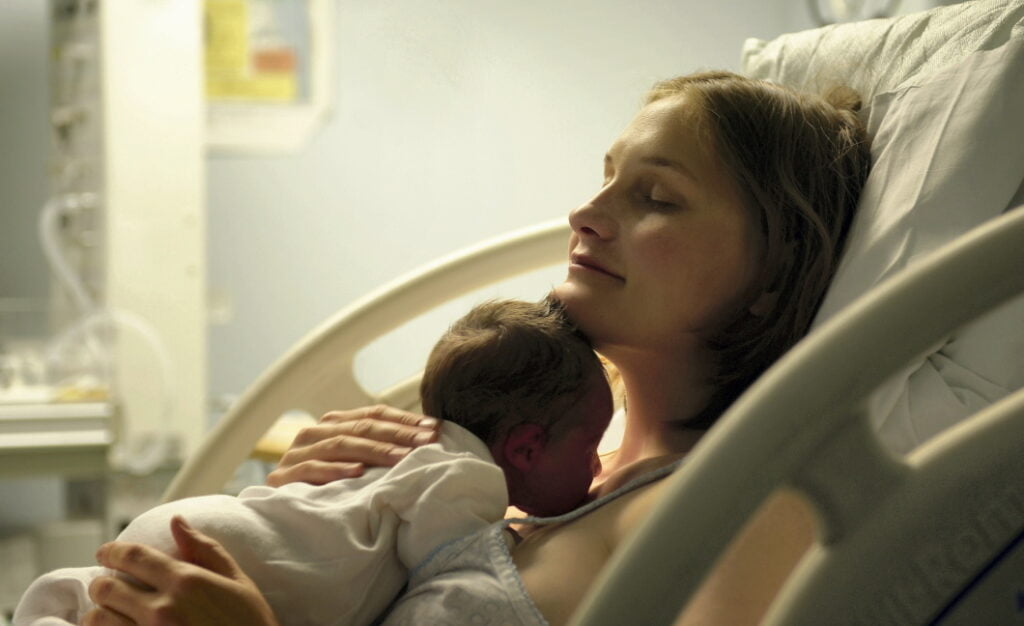Modern medicine has developed effective ways to deal with almost all complications in childbirth, except one.
Shoulder dystocia – when one of the baby’s shoulders becomes stuck during delivery – is the single emergency that’s most likely keep obstetricians awake at night.
They have just five to seven minutes to get the baby out or risk it suffocating. They use a series of manual maneuvers that are increasingly drastic, and which can cause injury to the mother and permanent damage to the newborn.

Abraham Yaari, an Israeli doctor now practising in the US, has come up with an astonishingly simple solution.
The Yaari Extractor is a simple mechanical tool – two rigid control arms that hold a flexible silicon sheath – that allows the OBGYN (obstetrician or gynecologist) to turn the baby round by 45 degrees and allow safe delivery.
“It is amazing how many of my fellow OBGYNs have told me that they can’t believe that they didn’t think of this solution themselves,” Dr Yaari tells NoCamels.
“Although shoulder dystocia is one of the most feared emergencies in the delivery room, I realized that it is in fact a simple mechanical problem. My goal was to come up with a simple instrument to solve this problem.”

Together with Aaron Feldman, who has many years’ experience in medical devices, they established FetalEase, a privately-held Israeli start-up company dedicated to commercializing the Yaari Extractor.
“There’s a whole bunch of obstetrical emergencies that can happen during birth,” says Feldman. “And for each one of these emergencies, there are different devices and products that are available.
“But there’s one obstetric emergency that to date does not have any device that’s available and it’s called shoulder dystocia.
“That’s when the baby’s head is delivered, but because the baby is too wide or too big, its shoulder gets stuck behind the mother’s pubic bone, and it just can’t progress out of the birth canal. One of the doctors we spoke to said in that situation we’d pay any anything just to get the baby out.”
Doctors have a protocol of around a dozen possible manual maneuvers to release the baby in such an emergency. They keep on trying maneuvers until something works.

“Sometimes the first maneuver works, sometimes the second but it can keep on going until and they get progressively more invasive, to the point where they use the Zavanelli maneuver, where they shove the baby all the way back in up the birth canal and do a caesarean section.”
In rare cases the baby may suffer injuries to the brachial plexus, a network of nerves in the shoulder. Usually the effects are temporary, but some babies go on to suffer lifelong Erb’s palsy – paralysis of the arm.
There are instances of babies dying or suffering brain damage. Even in less serious cases, all the twisting, turning and pulling can injure both the mother and the baby.
“You’ve probably heard of forceps and vacuum but they’re not suitable for shoulder dystocia,” says Feldman.
Sign up for our free weekly newsletter
Subscribe
“Dr Yaari came up with this concept of a device that allows the doctor to simply rotate the baby in the birth canal, so that the baby’s shoulder can be moved to a position that it can slide under the mother’s pubic bone.
“Over the years, doctors have tried other solutions, such as a long shoehorn, which did far mor damage than good, and modified forceps to pull out the baby’s head.”
The Yaari Extractor is simple to use, and effective, says Feldman. “You basically slide it in over under the pubic bone and over the baby’s arm, shoulder. The two arms are rigid, and those are used in order to control the baby.
“You tell her mother to stop pushing. You take the two arms, and you advance them forward towards the mother’s stomach and that makes the disconnect between the baby’s shoulder and the pubic bone.
“And then the doctor moves the arms 45 degrees, and that turns the baby. The mother resumes pushing and the baby can just slide out.”
“Doctors know where they’re starting with shoulder dystocia, but they know they don’t know where they’re going to end up. Things have a dynamic of their own when you when you use these maneuvers.
“Doctors wants to have a device and know that if they use it in a certain way, they’re going to have a certain outcome.
“Today they don’t have that certainty. It’s a very simple tool but it gives them a sense of control and consistency when treating this emergency.”
Dr Yaari, who invented the device, says it addresses a “geometric challenge”. The innovation was simply the combination of two elements – rigid arms and the flexible sheath.
The first clinical trials took place in Mumbai, India, during the Covid lockdowns. Prominent OBGYN Dr. Rajnish Patel was trained over Zoom. His first delivery was a hefty 4.5kg (9lbs 15oz) – proof that it worked well even on large babies.

Shoulder dystocia is more common in bigger babies, and average baby weight is increasing globally. Recent estimates put the occurrence of shoulder dystocia at between 0.2 percent and three percent of all vaginal deliveries – around 1.5 million births annually worldwide – but the figure could be as high as five or even seven percent.
FDA clinical studies starts in June and FetalEase hopes to have to have market clearance by mid-2025. In the US shoulder dystocia is the number one cause in obstetrics for malpractice suits.
“Once we managed to prove in the clinical study that using our device is safer and has better results than the manual maneuvers, then doctors are really going to have to use our device,” says Feldman.
“Because if they don’t, and something goes wrong, then they’re setting themselves up for legal issues.”
Related posts

Editors’ & Readers’ Choice: 10 Favorite NoCamels Articles

Forward Facing: What Does The Future Hold For Israeli High-Tech?

Impact Innovation: Israeli Startups That Could Shape Our Future




Facebook comments